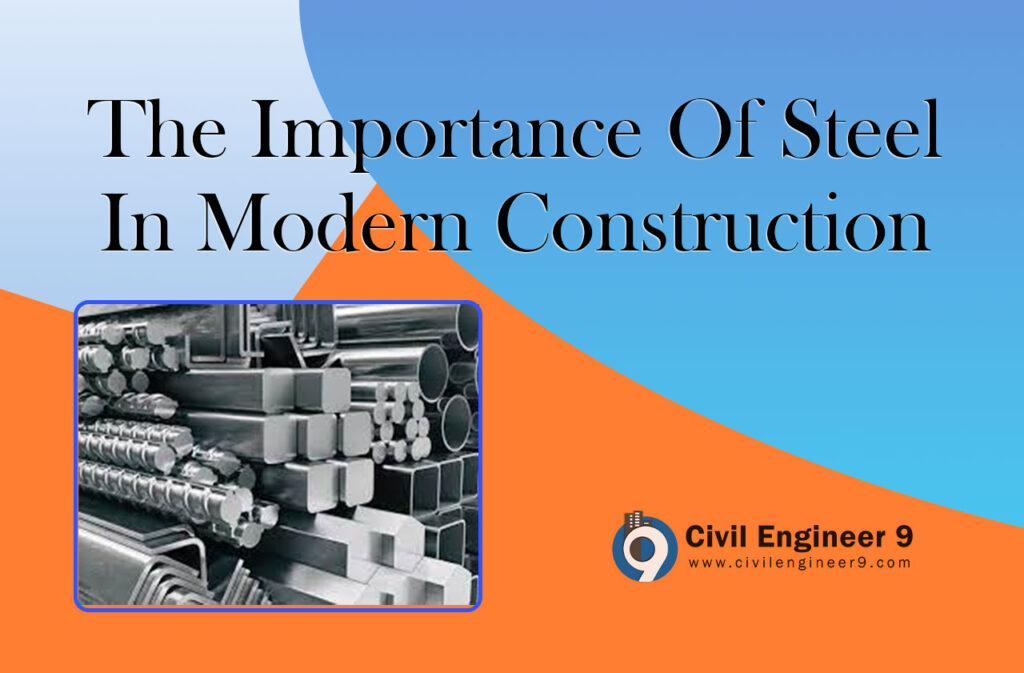Steel is the backbone of modern construction, known for its exceptional strength, versatility, and durability. It has been a fundamental material in engineering, playing a pivotal role in constructing buildings, bridges, and infrastructure projects worldwide. From towering skyscrapers to intricate architectural wonders, steel’s resilience and adaptability are indispensable in contemporary construction. So, let’s discuss the importance of steel in construction of the modern generation buildings.
Importance of Steel in Construction
Structural Integrity and Safety
In engineering, steel is highly regarded for its structural integrity and safety. The material’s high strength-to-weight ratio allows engineers to design structures with greater stability and load-bearing capacity. Steel’s exceptional performance under stress, whether from extreme weather conditions or seismic activity, ensures the longevity and safety of the built environment.
Sustainability and Environmental Benefits
Over recent years, eco-friendliness has emerged as a significant factor in the fields of construction and engineering. The sustainable nature of steel is exemplified by its recyclable properties and the ability to reuse it without affecting its quality. Utilizing recycled steel not only preserves resources but also minimizes the carbon emissions linked to new steel production. Moreover, advances in steel manufacturing have resulted in greener, more energy-conscious procedures, promoting environmentally responsible construction methods.
Design Flexibility and Innovation
Steel’s malleability and strength open up endless design possibilities in construction and engineering. Its ability to be shaped into complex forms makes it ideal for creating unique architectural landmarks and engineering marvels. From the graceful curves of bridges to the soaring, open spaces of modern buildings, steel has played a central role in enabling innovative design concepts.
High-Rise Buildings and Skyscrapers
One of the most iconic applications of steel in construction is in high-rise buildings and skyscrapers. The material’s exceptional strength allows architects and engineers to design structures that reach incredible heights. Steel framing systems provide the necessary support for these towering skyscrapers, making them not only functional but also aesthetically appealing.
Bridges and Infrastructure
Steel is a vital component in building bridges and infrastructure. Steel bridges are known for their longevity and ability to span great distances. The material’s flexibility and resistance to fatigue make it an ideal choice for withstanding the dynamic loads and environmental conditions encountered in bridge construction.
Cold Rolled Steel
Cold rolled steel is a specific type of steel that finds extensive use in construction and engineering. It undergoes a rolling process at or near room temperature, which imparts several desirable properties. Cold-rolled steel is characterized by a smooth surface finish and increased strength, making it suitable for a wide range of applications in construction, such as roof decking, cladding, and structural components.
Fire Resistance and Safety
Steel’s fire-resistant properties are crucial in construction. It maintains its structural integrity even at high temperatures, allowing occupants more time to evacuate a building in case of a fire. Steel’s fire resistance is enhanced through the use of fireproofing materials, making it an excellent choice for safeguarding lives and property.
Cost-Effective and Efficient Construction
Steel’s cost-effectiveness and efficiency in construction are evident in its rapid assembly and reduced labor costs. Pre-fabricated steel components can be produced off-site, streamlining the construction process. This approach significantly shortens construction timelines, reducing expenses and minimizing the impact on the surrounding environment.
Challenges and Innovations in Steel Engineering
The extensive use of steel in construction has led to ongoing advancements in steel engineering. Experts and engineers are investigating sophisticated coatings and treatments to improve steel’s longevity, resistance to corrosion, and eco-friendliness. Additionally, progress in computer-aided design (CAD) and simulation methods enables more accurate and effective engineering of steel frameworks.
Within the spheres of construction and engineering, steel serves as a fundamental material, epitomizing durability, eco-friendliness, and ingenuity. Its unyielding integrity, safety features, and versatile design capacities have empowered engineers to surpass limitations in the built environment. Steel’s versatility in skyscrapers, bridges, and infrastructure projects demonstrates its persistent importance. Furthermore, its contribution to economical and efficient construction methods solidifies its lasting relevance. As the sector progresses, steel will unquestionably maintain its crucial position in shaping the architectural silhouettes and landscapes of tomorrow.

